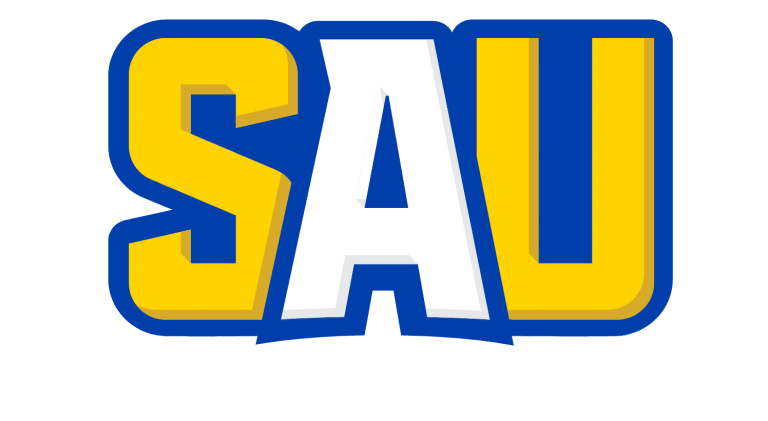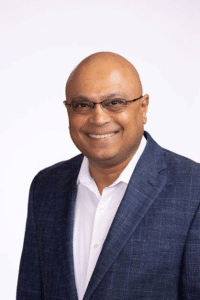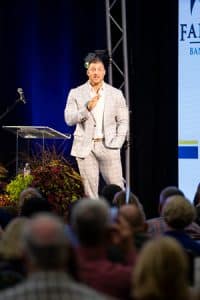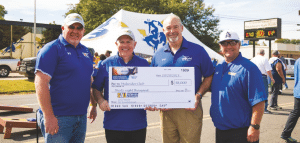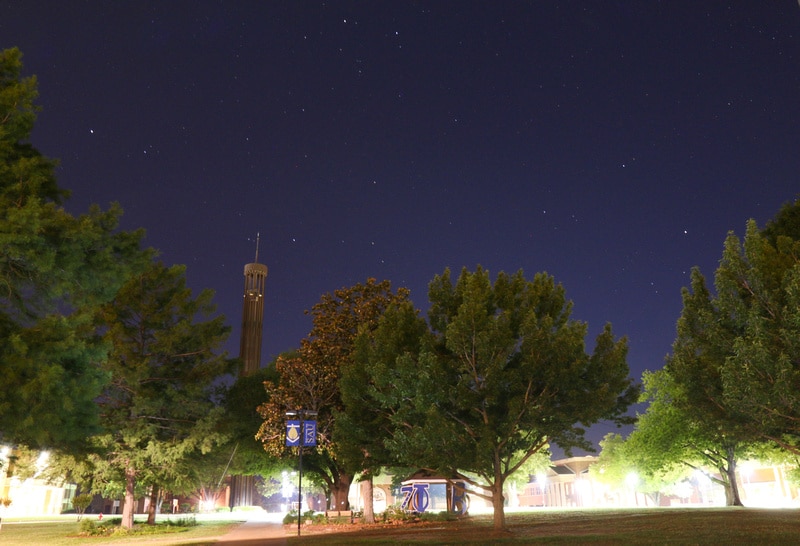 Southern Arkansas University computer science and engineering students have benefited from grants to their respective research projects from NASA. Projects involving 3D modeling and data mining are underway thanks to grant proposals written by faculty. The projects will not only result in new discoveries, but launch the students into their chosen career fields.
Southern Arkansas University computer science and engineering students have benefited from grants to their respective research projects from NASA. Projects involving 3D modeling and data mining are underway thanks to grant proposals written by faculty. The projects will not only result in new discoveries, but launch the students into their chosen career fields.
3D Modeling
Daniel Mckague, a junior B.S. Engineering and B.S. Engineering Physics double major from New Boston, Texas, toured the George C. Marshall Space Flight Center in Huntsville, Ala., as part of his additive manufacturing project.
Mckague traveled with Dr. Mahbub Ahmed, associate professor of engineering, to the NASA center to discuss details of his project and grant proposal. “Additive manufacturing is a process by which digital 3D design data is used to build component layers by depositing material,” Mckague said.
His goal is to design and print a functional centrifugal pump.
Ahmed wrote the grant proposal, which was accepted by NASA.
Mckague and Ahmed were invited to Alabama to learn more about NASA’s efforts and research on additive manufacturing in space. They were also given a tour of the space center.
“This trip meant a lot to me because I have always wanted to work for NASA,” Mckague said. “Speaking to NASA engineers and getting to see their work was inspiring.”
Mckague has worked on multiple projects at SAU. The first was assisting with a miniturbine and investigating the effect of biofuel on force and other components. He and Justin Vanhoose, a 2017 Engineering Physics graduate, presented this project at the 5th Annual Renewable Energy Conference in Jonesboro, Arkansas.
He also worked on the 2017 Total Solar Eclipse High Altitude Balloon launch.
“We had multiple test flights where we sent a high-altitude weather balloon to over 90,000 feet with various cameras and sensors attached … to collect data. Then, during the solar eclipse last August, we drove to Nashville, Tennessee, in the path of totality, and launched our balloon.”
NASA was a partner in the nationwide balloon launch project.
Mckague spoke of creating a 3D model on printers at SAU. It involves creating the desired model in AutoCAD software, which can take hours or days. The 3D model then goes into software which “slices” the model into thousands or millions of layers less than 1 millimeter in thickness. These layers are then converted into 3D printer language.
Mckague said SAU Engineering has a caring atmosphere. “All the professors are willing to help whenever you need it. They are more likely to give you one-on-one attention.”
Ahmed and Dr. Abdel Bachri, dean of the College of Science and Engineering, have had a “big impact” on Mckague. “Going into my sophomore year, Dr. Bachri told me about the option to double major, and has constantly pushed me to work hard. Dr. Ahmed has helped me apply for internships and taught me everything about AutoCAD, which has helped me greatly.”
Mckague is a member of the Society of Physics Students and the Engineering Club. His 3D modeling project also received a grant from the Arkansas Space Grant Consortium.
Data Mining
Devising an algorithm that might assist NASA in finding patterns hidden in large data sets is the goal of three computer science students.
The students – Kristopher Johnson, a freshman computer science major; Austin Simms, a freshman double majoring in math and computer science; and Quentin James, a sophomore computer science major – have received a $15,000 Data Mining grant from the NASA Space Grant Program.
“The method to be developed could have great application in understanding massive volumes of extra-terrestrial data during space exploration,” said Dr. Abdel Bachri, dean of Science and Engineering. “It could also be useful in any scenario where a large data set is available.”
Simms said they hope to discern obfuscated data patterns. “We’re being introduced to this kind of problem, where you have a large amount of numbers,” he said. “We hope to develop an algorithm to solve bigger problems more efficiently.”
Having surveyed the existing literature, they have defined a problem approved by NASA and are designing a program to solve it.
“We’ve been learning the basics so we can do a ‘deep dive,’” said Johnson, of Gentry, Arkansas.
Once the students have designed the algorithm, it can be applied to other data sets, allowing for the analysis of unknown phenomena.
“I’m very impressed with these students,” said Dr. Md Karim, chair of the Department of Math and Computer Science. “They were selected based on their potential and participation in class.”
Karim said other industries besides NASA generate “tons of data. It is difficult to predict all the potential uses, but there will be new understanding.”
He said students involved in such research will find ready careers. “General analysis can be applied to any field involving big data.”
“I look forward to Dr. Karim mentoring these students,” said Bachri. “They have great potential.”
The NASA Space Grant is a national network of colleges and universities working to expand public understanding of NASA’s aeronautical and space projects. It funds fellowships and scholarships for students pursuing STEM careers.
